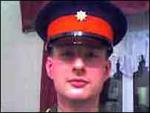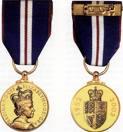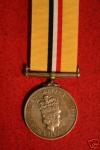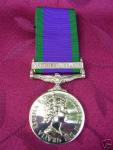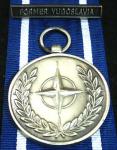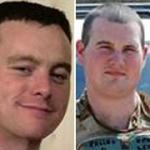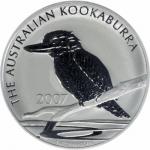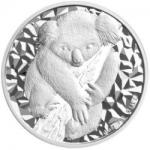-
Posts
3,503 -
Joined
-
Last visited
-
Days Won
26
Content Type
Profiles
Forums
Blogs
Gallery
Events
Store
Everything posted by bigjarofwasps
-

Roll of Honour Afganistan
bigjarofwasps replied to bigjarofwasps's topic in Modern Campaigns and Conflicts
-

Roll of Honour Afganistan
bigjarofwasps replied to bigjarofwasps's topic in Modern Campaigns and Conflicts
The total number of UK troops killed while on operations in Afghanistan since 2001 has risen to 70 after the death of a soldier in Helmand province on 11 August 2007. Capt David Hicks from the 1st Battalion The Royal Anglian Regiment died after being injured in an attack on his patrol base north-east of Sangin in Helmand province on 11 August. Capt Hicks also served in Bosnia and Iraq The 26-year-old, from Wokingham, Berkshire, was described as an "outstanding officer" who always led from the front. His commanding officer, Lt Col Stuart Carver, said that during the attack on the base, Capt Hicks had "led from the forward position" in order to direct the battle and "provide an inspiring example to his men". He added: "Even after being mortally wounded his only concern was to get back into position to control the fight." Private Tony Rawson from the 1st Battalion The Royal Anglian Regiment was killed on 10 August during a routine patrol in the area of Jusyalay, north east of Sangin, in Helmand Province. Pte Rawson had previously served in Iraq The 27-year-old from Dagenham, east London, known to his comrades as 'Nicey', joined the Army in 2002 and had previously served in Iraq. His commanding officer, Lt Col Stuart Carver, said Pte Rawson was "passionate about his job, with a big heart and a generous and trustworthy personality who died courageously in close combat". -

Miniature group
bigjarofwasps replied to dante's topic in Great Britain: Orders, Gallantry, Campaign Medals
Dante, So whats the crack, I for one would be very interested to hear what you`ve found. I wonder if a picture of the guy exists anywhere? Gordon. -

My Medals
bigjarofwasps replied to Tiger-pie's topic in Great Britain: Orders, Gallantry, Campaign Medals
-

My Medals
bigjarofwasps replied to Tiger-pie's topic in Great Britain: Orders, Gallantry, Campaign Medals
-

My Medals
bigjarofwasps replied to Tiger-pie's topic in Great Britain: Orders, Gallantry, Campaign Medals
-

My Medals
bigjarofwasps replied to Tiger-pie's topic in Great Britain: Orders, Gallantry, Campaign Medals
Johnsy, Thought I`d jump on the band wagon hope thats okey..... Here are my modest awards..... NATO Former Yugoslavia, I have a No 2, on the ribbon for this one, for obvious reasons.. -

My Medals
bigjarofwasps replied to Tiger-pie's topic in Great Britain: Orders, Gallantry, Campaign Medals
-
-
Tim, My sources are drawing a blank aswell, but we`ll keep trying! Gordon.
-
TP, Very interesting stories!!!!!! But your right it is all politics at the end of the day. But didn`t an Aussie win two VC`s in WW2? I know the other two double VC`s were RAMC doctors from the Boer War/ WW1. What was the name of the AIF guy who won the VC at Gallipoli, taking the trench and killing 7 Turks single handley? Theres also that guy from the Lonr Range Desert Group who won 3 DSO`s that it was claimed should have been VC`s. Beharry`s VC is also subject to debate (I believe). Not sure of the circumstances for the last VC to be honest, socan`t comment on that one. Goin` off topic again, what the ribbon on your avatar?
-
TP, I also suppose the chances of winning two VC`s, anyway are pretty slim....??? Re the DFC, I guess the fact that the Army press don`t print DFC after his name, sort of confirms it? Which I think is a bit of a swizz really, don`t you?
-
Tom, I walked right into that one didn`t I !!!!! $30 - $150, yeh thats about within my budget Like you I prefer the ones, that show signs of a little service. I`m just about spent up for this month, but thanks for the tip, I`ve got my eye on a few coins on ebay and elsewhere at the moment, there like buses aren`t they!!!.
-
Cheers Tom, .900 seems to be the average silver content for most silver coins, minted. Just out of interest are these expensive to collect?
-
British Trade Dollar B Mint Year 1900With the extension of British trading interest's in the East, especially after the founding of Singapore in1819 and Hong Kong in 1842, it became necessary to produce a special Dollar so as to remove the reliance of a British Colony upon the various foreign coins then in circulation. ThePicture is a Trade Dollar from the reign of Victoria. It is a 1900 B mint. China Trade, Silver Dollars were a direct result of the Opium Wars (1839-1843, 1856-1860), which began when China tried to stop Britain from selling opium to its citizens. The loser, China, had to open up a number of ports to British trade and residence, and cede Hong Kong to Britain. In the decades that followed, merchants and adventurers flocked to these areas, and international trade flourished. Foreign banks were established, and large silver coins from all over the world began arriving to pay for tea, silk, and Chinese porcelain to be shipped abroad. These .900 fine silver trade dollars were then circulated throughout China, where they were readily accepted as a medium of exchange. The British Trade Dollars, minted exclusively for use in the Far East, depict Britannia standing on shore, holding a trident in one hand and balancing a British shield in the other, with a merchant ship under full sail in the background. On the reverse is an arabesque design with the Chinese symbol for longevity in the center, and the denomination in two languages— Chinese and Malay. The British Trade Dollar was minted from 1895, with the last being produced in 1935. Those with the mint mark "B" were produced at the Bombay mint; others, marked "C", were struck in Calcutta. The mint mark "C" can be found in the ground between the left foot of Britannia and the base of the shield, while the mint mark "B" is located in the centre prong of the trident. The 1921-B dollar was struck but never released for circulation, and only a limited number of 1934-B and 1935-B coins were released. Certain dates are found with a new date being over-struck on another; these include 1897-B over 1896-B, 1900-B over 1894-B, 1901-B over 1900-B, 1909-B over 1908-B, 1904-B over 1898-B, 1903-B over 1902-B, 1908-B over 1903-B, 1904-B over 1903-B, 1929-B over 1901-B, 1908-B over 1907-B, and 1910-B over 1900-B. The British Trade Dollar was demonetized on August 1, 1937.
-
Minted in Philadelphia at Saudi Arabia's request, a cargo of three million silver Saudi one-riyal coins was shipped to the oil port of Dhahran, in Saudi Arabia's Eastern Province, late in World War II. But the Liberty ship that was transporting them, the S. S. John Barry, never arrived. Torpedoed by a German U-boat in the Arabian Sea more than 185 kilometers (100 nautical miles) off Oman in August 1944, the John Barry sank in waters so deep that no one thought she could ever be reached.
-
The United States Trade Dollar is a silver dollar coin that was issued by the United States Mint and minted in Philadelphia, Pennsylvania, Carson City, and San Francisco from 1873 to 1885. Business strikes ended in 1878. The coin was designed by William Barber, the mint's chief engraver. More trade dollars were minted in San Francisco than Carson City and Philadelphia combined. San Francisco was closest both to the source of the silver as well as the ultimate destination of the coins, China. Many Trade Dollars have what are called "chop marks" on them. The Chinese merchants would stamp the coins as a way to check their authenticity and to add their advertising logo. The United States Congress authorized the U.S. Mint to create a trade dollar to improve trade with the Orient, China in particular. Prior to that, the Mexican peso had been the primary silver coin used in trading with China. The US trade dollar was minted of 420 grains (27 g) of silver with a fineness of 900 (90 %), about 8 grains (520 mg) more than the domestic silver dollar of the time.
-
The SS John Barry was a 7200-ton American liberty ship in World War II. The ship left its convoy under radio silence to go on a mission to Dhahran in Saudi Arabia when it was torpedoed 185 kilometres off the coast of Oman by the German submarine U-859 on August 28 1944. Two crewmen were killed in the sinking and the survivors were rescued the next day. The SS John Barry was carrying a cargo of 3 million American-minted Saudi one-riyal silver coins as an American payment associated with ARAMCO. The reason for this shipment (one of several during the war) was that Saudi Arabia did not use paper money at the time and this led to a war time shortage of currency with which to pay workers building new oil refineries and other US facilities at newly founded Dhahran. Because the exact nature of the cargo was a secret, rumours spread that the SS John Barry carried a vast shipment of 26 million US$ (1944 value) worth of silver bullion to India as well as the smaller cargo of coins. After the recovery effort of this purported treasure failed (see below) it was discovered that all silver shipments to India was accounted for and a new destination for the silver bullion was theorized, the Soviet Union. The ship had sunk to 8500 feet below the sea surface, far beyond the reaches of most undersea recovery methods. Forty-five years later, however, Skeikh Ahmed Farid al Aulaqi was granted salvage rights. Brian Shoemaker and Jay Fiondella, owner of Chez Jay, a celebrity-renowned seafood dive in Santa Monica, California, decided to raise the money to retrieve the John Barry. Contractors from Houston, Texas were initially involved in the search, and their efforts were later augmented by the Toulon-based Institut Fran?ais de Recherche pour l'Exploitation de la Mer (IFREMER). In October 1994, a modified drilling ship, Flex LD, carrying a 50-ton video-equipped grab designed by IFREMER sailed to the location of the John Barry. By early November, much of the ship had been excavated, revealing vintage US Army trucks, tanks, and military equipment. However, soon after, the first sign of silver was seen (though initially the video feed was clouded by the ship's oil sticking to the camera lens). Over the next five days, the grab brought up 1.3 million Saudi riyals weighing 17 tons and showered them onto the drill-ship's deck. The purported Indian/Soviet silver was nowhere to be found, although the salvagers were unable to access all the locations they suspected the silver might rest. While some plans have surfaced to relaunch the recovery effort, none have come to fruition.
-
-

Op Telic Casualties & Fatalities
bigjarofwasps replied to bigjarofwasps's topic in Modern Campaigns and Conflicts
British Soldiers Killed In Iraq Named Updated: 17:38, Friday August 10, 2007 Two British soldiers killed by a roadside bomb in Iraq on Thursday have been named. Lance Sergeant Chris Casey and Lance Corporal Kirk Redpath died in an attack on their patrol, the Ministry of Defence said. Lance Sergeant Chris Casey and Lance Corporal Kirk RedpathThe men from 1st Battalion Irish Guards died, and another two were seriously injured, when an bomb exploded just after midnight local time. The soldiers were travelling in a convoy to the north of the Rumaylah oilfields, which is to the west of Basra City. Sgt Casey's Platoon Commander, Captain Stephen Wolseley, paid tribute. He said: "It is so difficult to write about Lance Sergeant Chris Casey at this time of great sadness as in my mind he was the most jovial and up-beat person I knew, the one person I could rely on to raise a smile or a laugh from the Platoon at a difficult time; his laugh and banter were totally infectious." Paying tribute to Cpl Redpath, Captain Tim Rogers said: "Where does one begin when trying to write about a chap who meant so much to so many people? "Lance Corporal Redpath had the ability to amuse and entertain whilst sticking to his core business of delivering the daily intelligence picture to the Squadron." -
Hi TP, well that clears that up, and makes perfect sense to!! But what about his use of DFC after his name is this allowed or not? Seems a bit of a shame if he`s not allowed to use it. Going slightly for a minute. What would happen say if say Pte Jones of the Austrialian Medical Corps won a British VC, then a few years later won the Austrialian VC, would he have two seperate VC`s or the British one with Aussie bar, or visa versa?
-
TP, found it!!! I know I`d read it somewhere!!!!! Medal News November 2005 (Operational Honours List 25, released on the 9th Sept). Page 8 an article in News & Reviews, its a lengthy article, so I won`t be typing it out here in full, however, I quote... "Watkins is the first time a DFC has been awarded to an Austrialian, as a foreign award rather than an Imperial award. Watkins will wear his DFC at the end of his medal group along with any other foreign awards, but will not be able to use the post nominal letters" Medal News is well known for its mistakes, so this maybe duff gen. Just open their Medal Year book, and you`ll find any number of mistakes, in there, but lets no go there right now. I`d very much like to hear from anyone who can confirm or deny their claim in this article.
-
TP, have looked threw old soldier mags, can`t find it, so it might well have been in Medal News. I`ll keep looking, but its the priverbial needle in a haystack!!!
-
Very nice Tim, thanks for sharing it with us. I`ve not seen one like its kind before, leave it with me I`ll see if I can find anything out about it for you.
-
Cheers TP, theres some cracking photographs there, did you take them? The Soloman Islands campaign sounds like a very interesting tour to say the least!!! Going back to the DFC guy, an interesting twist in the tale in the article I read it stated that because he wasn`t a UK national, his DFC would be worn after his Aussie medals, and that he wasn`t allowed to have the post letters DFC after his name. But looking at his photo, he seems to be wearing his DFC ribbon first. I`d be interested to know if the ruling has been changed, and whether he`s since be allowed to use DFC, and or which order his ribbon should be worn. Any ideas? I seem to remember reading the article in Soldier Magazine, I`ll see if I can find it again, and get back to you. Gordon.



